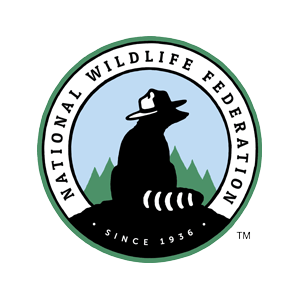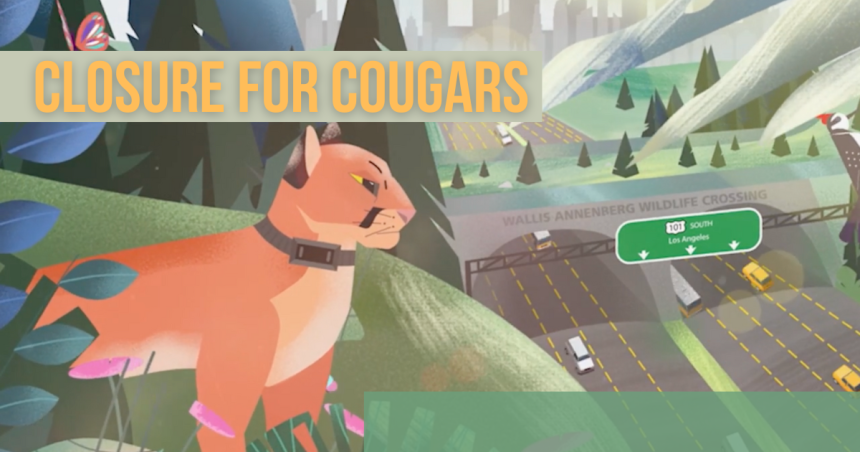The large-scale concrete beams that will support the conservation structure’s span across the 101 freeway in the Los Angeles area, are scheduled to be installed starting on the Week of April 15th.
A public service announcement about the process can be downloaded HERE.
Renderings of the crossing, drone footage over the construction site and various other assets can be accessed HERE.
Agoura Hills – The #SaveLACougars campaign is preparing to celebrate an exciting and major construction milestone on the monumental effort to complete the Wallis Annenberg Wildlife Crossing in Los Angeles County. To date, more than 6,100 tons of concrete have been poured and over 426 tons of bar reinforcing steel have been placed to create the walls of the structure on either side of the freeway and the columns in the median on the 101 freeway. Next month, Caltrans construction crews are planning to begin the complex process of installing the large-scale concrete beams that will be the first horizontal supports for the crossing. Caltrans’s plan includes placing the girders late at night as well as other measures to make the process as convenient as possible for highway users.
With this next step in construction, Caltrans will close half of the 101 freeway—all lanes in one direction—for the first time for this project. Closures are expected to begin around April 16, but this date is subject to change. Closures will occur on Monday through Friday nights for five hours starting at 11:59 p.m. Each night, only one direction of the 101 Freeway will be completely closed – lanes in the opposite direction will stay open for traffic.
The entire process of placing these concrete beams is expected to take from thirty to forty-five days to complete and will feature the placement of a total of 82 concrete beams, or girders, across all ten lanes of the 101 freeway. The girders, long boxes of reinforced concrete, will become the first level of the wildlife crossing’s multilayered structure above and across one of the nation’s busiest freeways. To avoid lengthy closures of the freeway, the girders were manufactured off-site in Riverside County and large trucks will transport them to the construction site. Each girder over the northbound lanes is 103 feet long and weighs 140 tons. Each girder over the southbound lanes is more than 93 feet long and weighs over 126 tons. For context, the weight of just one girder is equivalent to the weight of more than 14 African elephants!
“We are very excited to celebrate this big milestone in the construction of the Wallis Annenberg Wildlife Crossing. With the placement of the horizontal supports, the structure is truly going to start looking like the bridge it will become,” said Beth Pratt, California Regional Executive Director for the National Wildlife Federation. We know that closures of the freeway do have impacts on traffic and the community, and we apologize for any inconvenience this may cause. Caltrans has a thorough plan for detours, and we trust their excellent team to manage this to minimize disruption. And these ‘closures for cougar’ are for a good cause—helping to save the area mountain lions from extinction and ensuring a future for all wildlife in the Santa Monica Mountains.”
To receive regular information on all of the construction progress and the upcoming closures and detours, everyone is encouraged to sign up for a weekly newsletter by contacting Michael Comeaux at Caltrans at michael.comeaux@dot.ca.gov or by calling (213) 897-9372. Caltrans also posts updates on the project on X (formerly Twitter) on their account, here.
The Wallis Annenberg Wildlife Crossing is a visionary bridge that will help wildlife travel safely across one of the busiest highways in the United States, support local biodiversity, expand refuge for critical pollinator species, and prevent the extinction of the local mountain lion population. Beyond the robust engineering it relies on, a sophisticated ecological restoration plan will create a habitat across the surface of the crossing and in approximately 12 acres of open space, alongside it. These new native wildlife habitats will reinforce the biodiversity of the Santa Monica Mountains and provide the shelter, food, and water the dozens of area wildlife species, need to thrive. The crossing will be the largest of its kind in the world, a first in California, and a global model for urban wildlife conservation.
The wildlife crossing is scheduled for completion at the end of 2025 or early 2026. The project is the result a public-private partnership of unprecedented scope that has leveraged the world-renowned expertise and leadership of dozens of individuals, organizations, and institutions.
Learn more about the #SaveLACougars campaign’s #P22Legacy phase here and The Wildlife Crossing Fund here. Access renderings of the Wallis Annenberg Wildlife Crossing, including drone footage over the construction site, here and follow progress on the visionary structure by visiting its dedicated website at www.101wildlifecrossing.org
###
The National Wildlife Federation is America’s largest conservation organization with over 6 million supporters nationwide, uniting all Americans to ensure wildlife thrive in a rapidly changing world. Follow us on Facebook, Twitter, and Instagram. To learn more about the #SaveTheCougars campaign to build the Wildlife Crossing at Liberty Canyon visit https://savelacougars.org/

